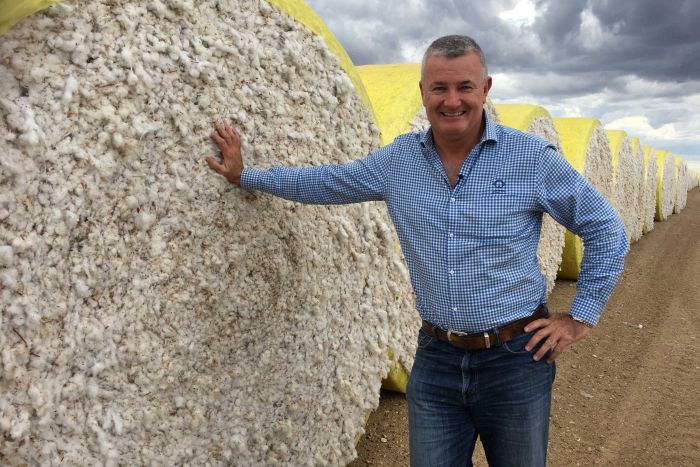PETRA OATES, The Weekly Times
WITHOUT significant inflows to irrigation dams in the next five months, the next cotton season could yield as low as one million bales, according to Cotton Australia chief executive Adam Kay.
In the 2018-19 season there was an increase in dryland cotton production despite the drought in from Gunnedah and the Liverpool Plains, through to central parts of Queensland, Mr Kay said.
But with harvest estimated for the 2018-19 season at 2.1 million bales, overall production has dropped 54 per cent on last season’s 4.6 million bales, according to the recent Australian Bureau of Agricultural and Resource Economics Australian crop report.
“In the last 30 years the smallest crop was the 2008 harvest in (the) middle of the millennium drought which was 600,000 bales and last season was 4.6 million bales,” Mr Kay said.
“ … and the forecast for the coming season without the significant inflows in the next five months, is one million bales.”
Mr Kay said growers were encouraged by prices to plant rain-grown cotton, but little to no in-season rain lead to low yields.
“It was a terrible season for dryland cotton,” Mr Kay said.
“About one-fifth was ploughed in and of the four-fifths left the yields were well below average.”
Mr Kay said with limited available water, producers who decided to irrigate their cotton as usual didn’t fare much better.
“Even the irrigated crop was below average because (producers) ran out of water. Most crops were one to two irrigations short and that pulled back their final yield,” Mr Kay said.
The crops that managed a full irrigation were only achieved using groundwater or water carried over from the previous season from producers who choose not to use all their water allocation in an attempt to smooth out production.
But for the farmers that produced a crop, Mr Kay said prices were “historically quite high” at $660 per bale and above.
“Where the crop had full water, the yields were quite good, but overall in irrigated cotton it’s come in at slightly below average,” he said.
For the limited bales available this season, prices are high thanks to the quality of Australian cotton on the global market.
“Other countries have bales in storage but Australia sells every bale, every year — it’s very in demand globally,” Mr Kay said.
Prices next season are less favourable on the global market with a big cotton planting set for harvest in the US.
“We’re seeing the market coming off a little at the moment,” Mr Kay said.
“Prices are about $570 per bale now so it’s come off a little bit based on the bigger global influencers.”
The Rabobank Australian cotton price forecast report — published last week — showed a combination of “swelling” global supplies and a “tepid” demand outlook could see local prices decline from mid-May highs.
“Despite this softening though, these prices should continue to provide positive margins to domestic growers” the report said.


